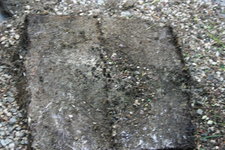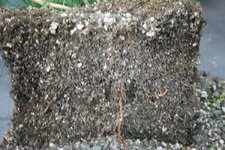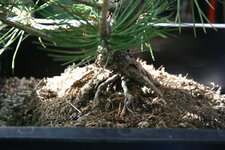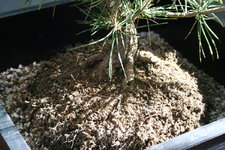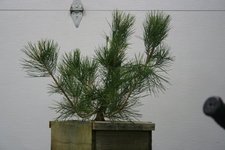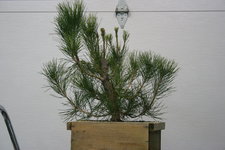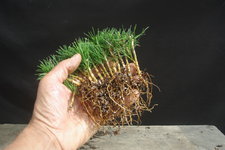Frank,
Thanks for the info. What pots/container or method are you using at each of these stages?
Keep in mind that container selection is affected by climate and nursery practices. I use the following progression of containers. And I deliberately chose as slower method for development to focus on nebari, movement and lower branches in the beginning stages rather than focus on a thick trunk first.
1.Seeds in Anderson flat for germination.
2. A two inch pot for stem cutting placement. sand in centre, small particle pumice, lava, akadama, below and surrounding.
3. An eight inch colander for seedling after first year. ( usually the following spring after germination the year before.)
4. Colander placed in grow bed for years 2, 3, 4, This allows for rotation, easier wiring for movement, root improvement and rootball development.
5. Years 4-8 cedar wood grow boxes medium particle mix as above with granite added. ( granite added for weight as grow out involves lots of extension height and wind on my site. ( focus on sacrifice leaders, branches and primary branch selection, cut back for back budding as required ) not referring to decandling)
6.Years 8 plus depends on plan for the individual tree, grow out further I place in an Anderson flat for the remaining time to grow out! If the tree will be a smaller style and I wish to begin more refined development than a medium size training pot and on to the bench.
PS: the overlap in timing is to account for individual variance in growth pattern!

